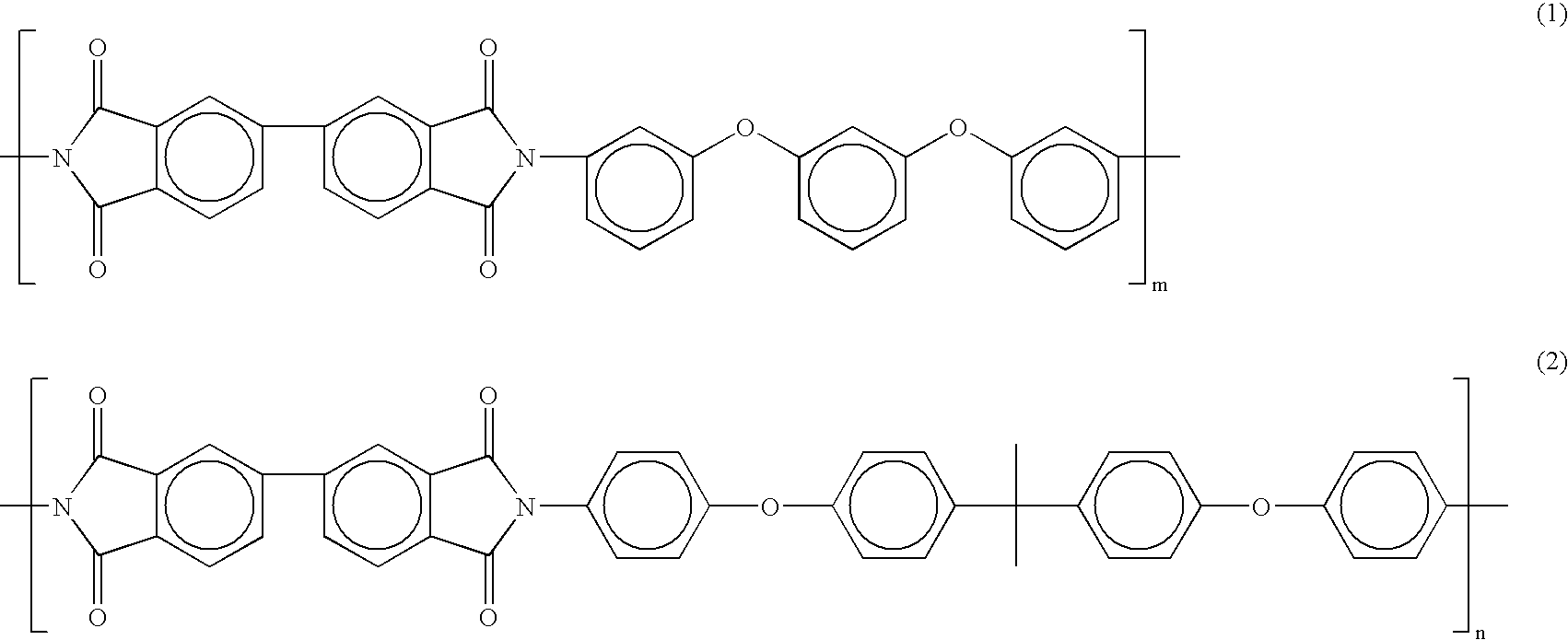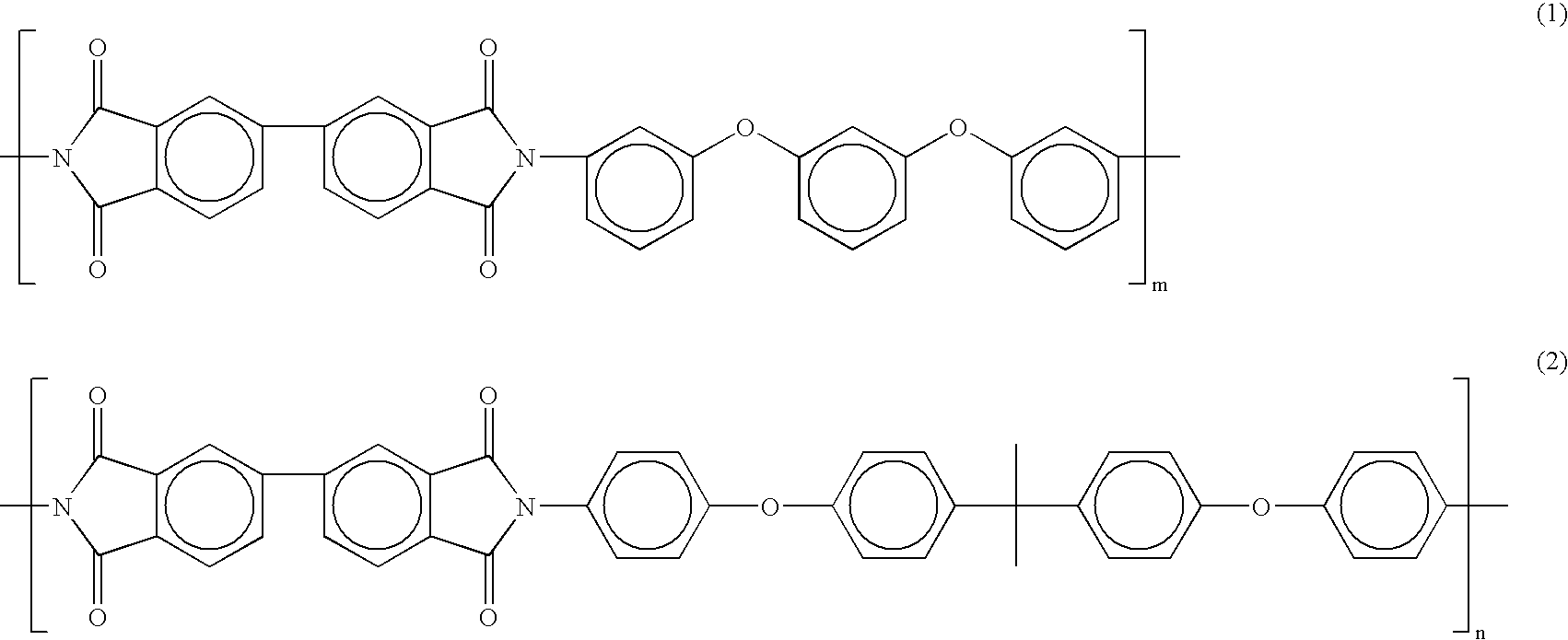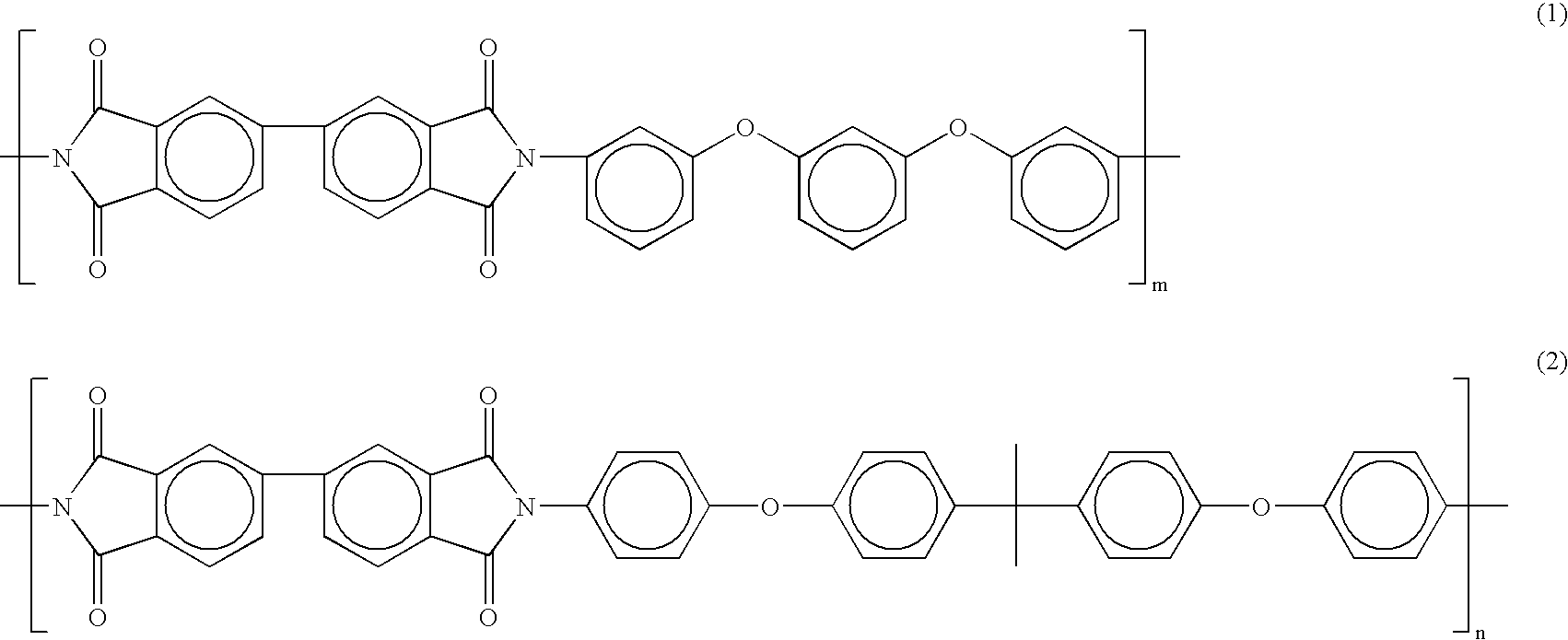Resin composite metal foil, laminate and process for the production of printed wiring board using the laminate
- Summary
- Abstract
- Description
- Claims
- Application Information
AI Technical Summary
Benefits of technology
Problems solved by technology
Method used
Image
Examples
example 1
[0039] A 2-liter three-necked flask having an anchor type stirring rod made of stainless steel, a trap equipped with a nitrogen-introducing tube and a stopcock, and a reflux condenser having a cooling tube with a ball, installed on the trap, was charged with 117.68 g (400 mmol) of 3,4,3′,4′-biphenyltetracarboxylic dianhydride, 87.7 g (300 mmol) of 1,3-bis(3-aminophenoxy)benzene, 4.0 g (40 mmol) of γ-valerolactone, 4.8 g (60 mmol) of pyridine, 300 g of N-methyl-2-pyrrolidone (to be referred to as “NMP” hereinafter) and 20 g of toluene. The mixture was heated at 180° C. for 1 hour and then cooled down to about room temperature. 29.42 g (100 mmol) of 3,4,3′,4′-biphenyltetracarboxylic dianhydride, 82.12 g (200 mmol) of 2,2-bis{4-(4-aminophenoxy)phenyl}propane, 200 g of NMP and 40 g of toluene were added and the components were mixed at room temperature for 1 hour and then heated at 180° C. for 3 hours, to obtain a block copolymer polyimide resin solution having a solid content of 38%. T...
example 2
[0041] A copper-clad laminate having a thickness of 0.4 mm was produced in the same manner as in Example 1 except that the F0-WS foil as an electrolytic copper foil used in Example 1 was replaced with F3-WS foil (Rz=2.4 μm, supplied by Furukawa circuit foil Co., Ltd.) having a thickness of 12 μm. Table 1 shows the evaluation results.
example 3
[0042] A 2-liter three-necked flask having an anchor type stirring rod made of stainless steel, a trap equipped with a nitrogen-introducing tube and a stopcock, and a reflux condenser having a cooling tube with a ball, installed on the trap, was charged with 117.68 g (400 mmol) of 3,4,3′,4′-biphenyltetracarboxylic dianhydride, 123.18 g (300 mmol) of 2,2-bis{4-(4-aminophenoxy)phenyl}propane, 4.0 g (40 mmol) of γ-valerolactone, 4.8 g (60 mmol) of pyridine, 300 g of NMP and 20 g of toluene. The mixture was heated at 180° C. for 1 hour and then cooled down to about room temperature. Then, 29.42 g (100 mmol) of 3,4,3′,4′-biphenyltetracarboxylic dianhydride, 58.47 g (200 mmol) of 1,3-bis(3-aminophenoxy)benzene, 200g of NMP and 40 g of toluene were added and the components were mixed at room temperature for 1 hour and then heated at 180° C. for 3 hours, to obtain a block copolymer polyimide resin solution having a solid content of 38%. The block copolymer polyimide resin had a formula (1):...
PUM
| Property | Measurement | Unit |
|---|---|---|
| Temperature | aaaaa | aaaaa |
| Time | aaaaa | aaaaa |
| Thickness | aaaaa | aaaaa |
Abstract
Description
Claims
Application Information
 Login to View More
Login to View More - R&D
- Intellectual Property
- Life Sciences
- Materials
- Tech Scout
- Unparalleled Data Quality
- Higher Quality Content
- 60% Fewer Hallucinations
Browse by: Latest US Patents, China's latest patents, Technical Efficacy Thesaurus, Application Domain, Technology Topic, Popular Technical Reports.
© 2025 PatSnap. All rights reserved.Legal|Privacy policy|Modern Slavery Act Transparency Statement|Sitemap|About US| Contact US: help@patsnap.com



